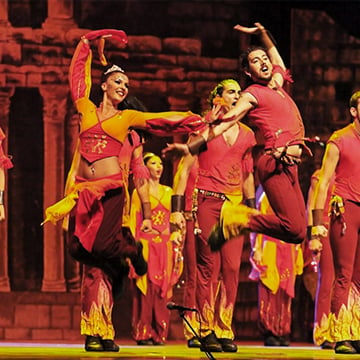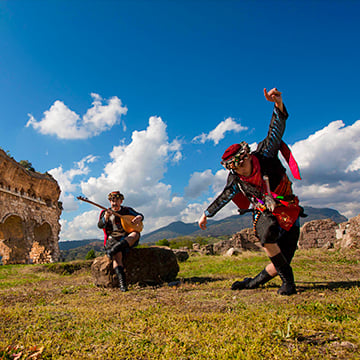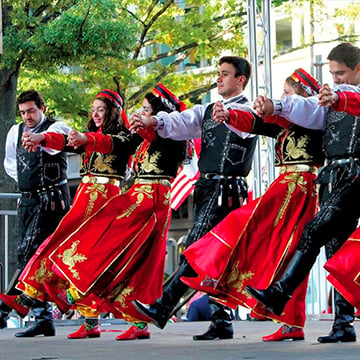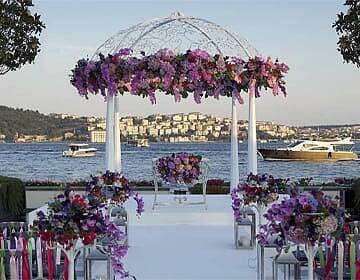Traditions to Know When Living in Turkey: Folk Dances
In recent years, Turkish lifestyle and traditions have started to attract great attention from people all around the world including Turkish folk dances, music, and visual arts. Turkey’s popularity as a holiday destination and favorable living conditions for retirees are the main reasons for this increase in attention.
Mass media and the admiration for Turkish dramas and movies also play a great role in this situation. As a result of this interest, more and more people want to settle in Turkey or visit it at least once.
Whether you’re planning to settle in Turkey or visit it during a holiday, it’s important to learn a Turkish tradition or two. By doing so, you can blend in more naturally and experience the Turkish lifestyle. Let’s start with learning the traditional Turkish folk dances;
What Is the Traditional Dance of Turkey?
Traditional dances in Turkey differ depending on the region. As a previously nomadic society that has actively interacted with different societies and cultures, Turkish culture and traditions are very diverse. This includes traditional dances as well. Here are some of the most popular traditional folk dances in Turkey;
• Halay: Halay is generally performed in eastern, southeastern, and central Anatolia. However, it is one of the most widespread traditional Turkish dances. Halay dance in Turkey is generally performed along with an upbeat rhythm consisting of drums and a kaval. It’s a type of group dance where participants link their little fingers (or their hands depending on regional variations).
• Hora: Hora is a Turkish folk dance that originates from the Thrace (Trakya) Region of Turkey. It’s an upbeat group dance performed by at least 5 people. Dancers usually wear colorful traditional clothes during their performances.
• Horon: Horon is a unique folk dance that originates from the Black Sea region of Turkey. This dance has a different tempo, rhythm, and measure from all other Turkish traditional dances. Since it’s hard to match the fast tempo with any other instrument, kemençe is the main instrument used for horon performances. Performers of horon dress in black traditional clothes with silver trimmings and dance with their arms linked.
• Zeybek: Turkish folk dance zeybek is a well-known folk dance that originates from the Aegean region and western Anatolia. During zeybek performances, colorfully dressed dancers called “efe” dance along to Turkish folk music and display a story of courage and heroism. The tempo of zeybek can vary from slow to fast and high speed.
 • Kaşık Oyunu: It’s a traditional folk dance performed in some parts of central Anatolia and the Mediterranean region. Kaşık Oyunu can be literally translated as “dance with spoons”. As the name suggests, the dancers use small wooden spoons to create a rhythm during their performances. Bağlama and clarinet are among the main instruments that accompany these performances.
• Kaşık Oyunu: It’s a traditional folk dance performed in some parts of central Anatolia and the Mediterranean region. Kaşık Oyunu can be literally translated as “dance with spoons”. As the name suggests, the dancers use small wooden spoons to create a rhythm during their performances. Bağlama and clarinet are among the main instruments that accompany these performances.
• Atabarı: Atabarı is a traditional folk dance originating from the Artvin province of Turkey. The original name of the dance is Artvin Barı. The name of the dance was changed after a performance before Atatürk, the founder of modern Turkey, in 1936. According to the eyewitnesses, Atatürk became very fond of the dance that he joined the dancers during the performance.
Today, this dance is frequently performed at the ceremonies at the schools during national holidays for commemoration.
• Sema: Sema is the traditional Turkish Sufi dance. Sufi dance in Turkey, in its origin, is a part of meditation and prayer in Sufism. The ceremony performed by whirling dervishes, also known as semazen, symbolizes a mystical journey of man’s spiritual ascent and the cleansing of one’s heart of ego. In 2008, this ceremony was accepted as one of the Masterpieces of the Oral and Intangible Heritage of Humanity by UNESCO.
What Is the History of Turkish Dance and Why Are They Important for Living in Turkey?
Currently, it’s not possible to exactly tell the history of Turkish folk dances despite the ongoing research. This situation is the result of the previous nomadic lifestyle and interactions with different cultures. But, it’s safe to say that they are very old. While some dances originate in the 16th and 13th centuries, some originate back to Byzantine times.
However, the importance of Turkish folk dances for people living in Turkey does not only lie in the historical backgrounds of the dances. The real importance lies in the determination of Turkish people to carry on the traditions. Today, some of these folk dances are still being performed regularly and hold great importance for certain occasions.
For instance, dances like horon, halay, hora, çayda çıra, and kaşık oyunu are some of the most famous Turkish traditional dances for wedding ceremonies. The bride and the groom, their families, friends, and all guests at the ceremony can participate in these dances to celebrate the marriage. If you’re planning to settle in Turkey, you can be sure that you’re going to witness these dances in the wedding ceremonies of your new neighbors.
On the other hand, Turkish traditional dances named zeybek, kılıç kalkan, atabarı, and teke are performed at the ceremonies during national holidays. These dances are performed to celebrate the important occasions in the foundation of modern Turkey and to commemorate the ancestors.
Nevertheless, folk dances have an important place in Turkish traditions and culture. So we advise people who want to live in Turkey by buying property to have some basic knowledge.







